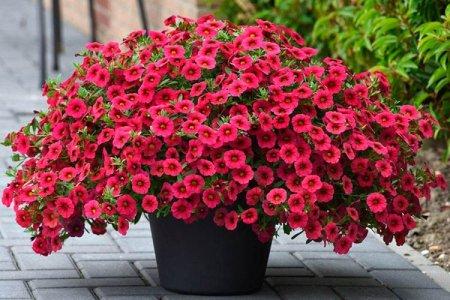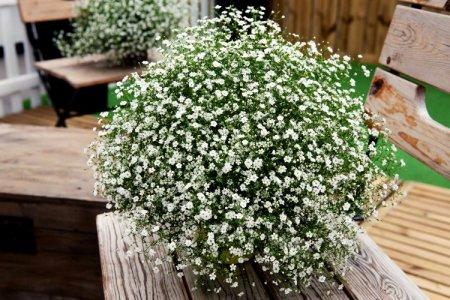
Tender lilies of the valley decorate the flower beds every spring, as soon as the snow melts. They are loved not only for their charming beauty, but also for their absolute unpretentiousness. This is the same flower that you can safely forget about after planting. Considering a few subtleties, which we will now tell you about!
general information
Lilies of the valley are primroses and bloom somewhere in April. Once they were referred to as liliaceae, but now it is established that this is a genus of asparagus. For more than a century, lilies of the valley have been cultivated and grown for decorative purposes. But wild species are listed in the Red Book.
Lilies of the valley are used in folk medicine and perfumery. They bloom for about two weeks, and cover the soil with a solid white-green carpet. The shape of the peduncle is interesting - it has a triangular cross-section, and from above it whimsically twists.
Small buds-bells seem to be strung on a peduncle. Their size rarely exceeds 0.5 cm and they are collected in groups of up to 12 pieces. After flowering, bright berries form. Lush green leaves of lilies of the valley remain as bright and beautiful until the second half of summer.

Types of lilies of the valley
There are dozens of decorative varieties of lilies of the valley. But there are only three species that are different from a morphological point of view. Here they are!
May lily of the valley
A European variety that is most often found in the wild in forests and lawns. Its powerful root system is formed of thin small roots that spread out in all directions. The maximum height of the peduncles is 30 cm, and the buds are collected in inflorescences up to 20 pieces.

Mountain lily of the valley
An exotic guest in our latitudes in nature is found only in some regions of North America. It has tall, elongated leaves up to 35 cm and wide bell-shaped flowers up to 8 mm long.

Lily of the valley Keiske
A Far Eastern lover of moss, moisture and a harsh climate, this lily of the valley is found in Transbaikalia and the Far East. It has unusual scaly lower leaves of a dark shade. The height rarely exceeds 18 cm, and the inflorescences are collected from 4-10 buds.

Lily of the valley care
Caring for lilies of the valley is so simple that it doesn't exist at all. Especially when the plants are already a little stronger after planting - in about a month. Unless just periodically inspect flowers for pests and diseases!
Temperature and lighting
Lilies of the valley have no special temperature requirements. It is best to plant them in the shade or partial shade. Remember that in their natural environment they grow in the forest between trees and bushes.

Watering
Lilies of the valley are very fond of moisture and should not be overdried, because they will not bloom normally. The humidity should be constant, but do not turn the site into a swamp.

The soil
Lilies of the valley can grow and bloom profusely on any soil. They cannot stand only salt marshes and marshlands. But light loams are best suited for them.

Fertilizers and feeding
In most cases, lilies of the valley do a great job without feeding, if they have enough moisture. But in too poor soil, you can add a little organic matter, and in the second year - mineral fertilizers.

Wintering
Lilies of the valley hibernate without shelter in any regions of Russia. But just in case, pay attention to specific recommendations if you buy some rare breeding variety. Only recently planted plants can be sprinkled with mulch in case of a snowless winter.

Safety
Unfortunately, lilies of the valley are toxic, so be sure to work with them with gloves. If you have children or pets, it is better to remove the fruit after flowering.

Thinning
In terms of the speed of independent reproduction and growth, lilies of the valley can compete with many weeds. Therefore, keep in mind that planting them just for a year in a small plot will not work.
They will rapidly expand and capture territory.Even if this suits you, we advise you to thin out the planting every couple of years, otherwise, due to the density, the plants cannot develop and bloom.

Planting and breeding
It is best to plant lilies of the valley in the fall before severe frosts. Plant them in grooves in grooves at a distance of about 10 cm.Do not embed them too deep into the ground - 2-3 cm is enough.And do not thicken the plantings, because they themselves are actively growing, and this is fraught with an untidy look of the lawn, and also fungus and rot ...
It is more convenient to propagate lilies of the valley by dividing, because the seeds germinate for a long time and poorly, and you will not soon achieve flowering. It is enough just to divide one bush into several parts with healthy roots and shoots. If everything is done carefully, they can bloom in the spring.
You can plant lilies of the valley in the spring, but this is usually more of a hassle. Not only will they not bloom in the coming year, but they can also get sick more often. In addition, the site for planting will still have to be prepared in the fall - to dig up and fertilize.

Pests and diseases of lilies of the valley
Most often, lilies of the valley suffer from gray rot, which is caused by high humidity combined with coolness. This is a common problem in all early flowers. But special preparations help well from it.
But gleosporiasis is a disease that is characteristic for the most part only lilies of the valley. Spots with a red border appear on the leaves. We advise you to remove all damaged areas, and treat the planting with fungicides several times at intervals.
Lilies of the valley are loved by sawflies, who simply eat up all the greens in their path. Use complex insecticides as early as possible. But it is almost impossible to fight the root nematode, and diseased flowers will have to be destroyed, and the soil must be disinfected.

Lilies of the valley - photo
Small islands or large flower beds - in any form, lilies of the valley look simply amazing. Do you doubt it? Look!


























